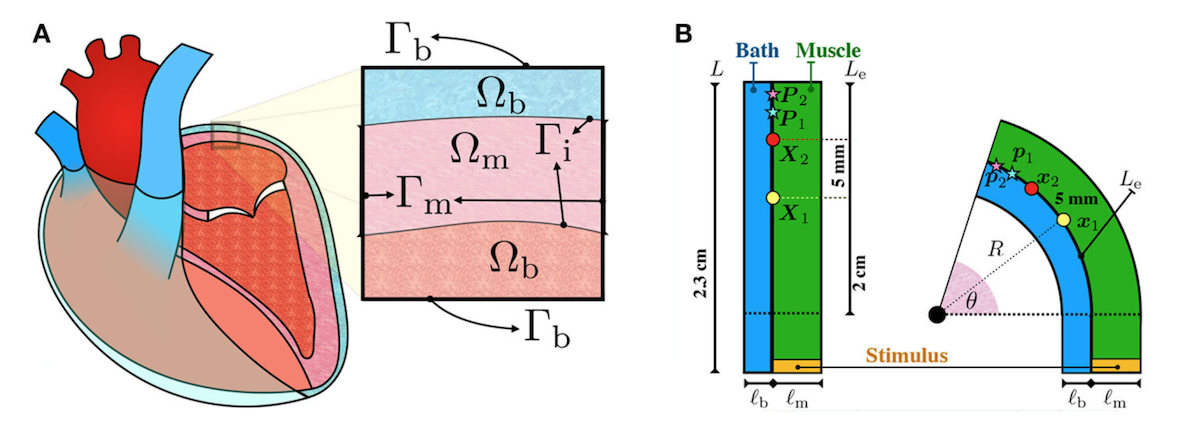Influence of geometrical factors on fast simulations of cardiac modelling
- Typ:Bachelorarbeit
- Betreuung:
Motivation
Cardiovascular diseases are the leading causes of mortality and mobility in the world. Many of the mechanisms of pathophysiology of these diseases are unclear. Consequently, treatment strategies are far from optimal. Biophysical models of the electrical activity of heart are the gold standard for cardiac electrophysiology modelling and they have provided meaningful contributions in the field during the last years. Unfortunately, they require supercomputers to simulate one heartbeat of the whole heart taking a plethora of CPU hours. Application of these kind of models on supporting tools to cardiologists in the hospitals is very challenging. Eikonal models are another alternative to investigate these cardiac diseases. They can be 1000 times faster than biophysical detailed models, and can potentially be used in the clinics. Nonetheless, they fail to incorporate important physiological phenomena in the simulations. For example, one of the relevant effects is that changes on the curvature, bath loading and wall thickness of the heart can speed up or down the electrical propagation in the cardiac tissue. (Rossi, S., Gaeta, S. et al. 2018). The aim of this project is to investigate how to incorporate these phenomena into the Eikonal models. This will contribute to better estimate the risk of arrhythmias in each patient using Eikonal models. (Azzolin, L, Luongo G. 2020)

Student Project
At the beginning, you will explore the available literature to get a basic understanding of the Eikonal model and the most important differences with the biophysically more detailed models. You will also get to know the implementation of the Eikonal model available in MATLAB and run simple experiments in a 2D block with different thickness and curvature to compare the current Eikonal model with the biophysical models. Then you will implement a regression model to use information from previously published experiments performed using one of the biophysical models. In this model the conduction velocity will be calculated based on wall thickness, bath loading, and curvature. Finally, you will incorporate this formula in the Eikonal model to calculate the conduction velocity based on all those geometrical factors. The expected results of the last simulation are to reproduce the curvature in the wave-front as observed on the bidomain simulations.
Skills needed
- Written and spoken English
- Basic programming skills
- MATLAB is a plus
